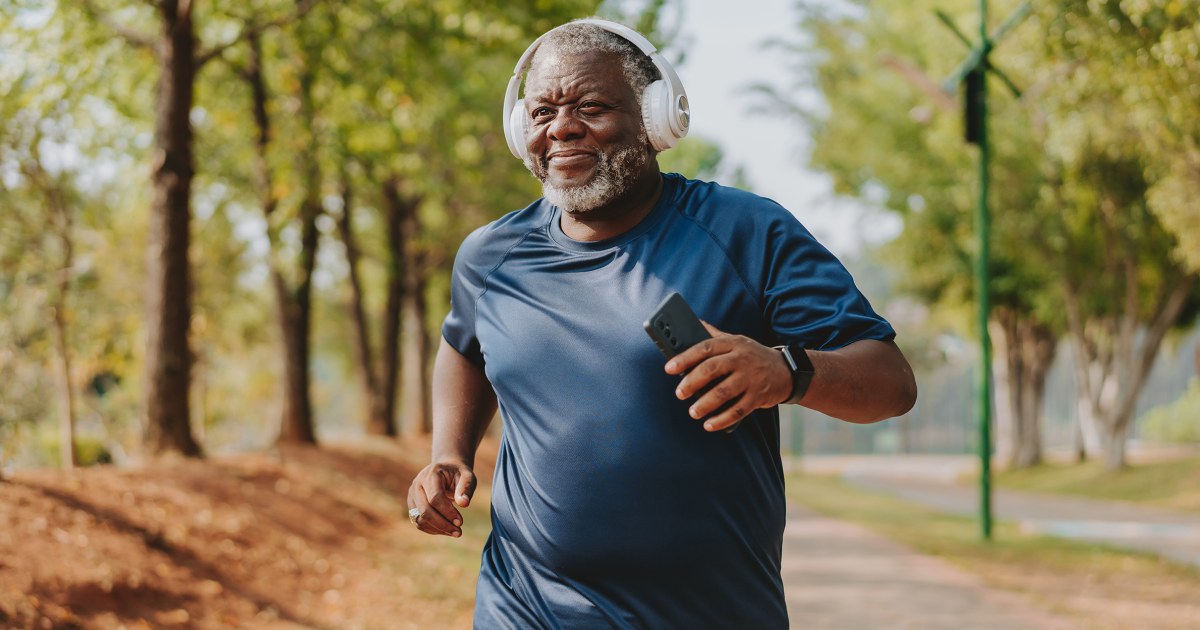Belly fat tends to get a bad rap, but new research shows that one kind of belly fat can be healthier than others — provided you’re willing to get moving.
“Fat is really misunderstood,” said Jeffrey Horowitz, a professor of exercise physiology in the University of Michigan School of Kinesiology. “The fat we have, especially that which is stored under our skin, is a really important place to store our energy.”
In a new study published Tuesday in the journal Nature Metabolism, Horowitz and his team found that people with obesity who get regular aerobic exercise have healthier belly fat tissue — specifically, that subcutaneous fat stored just beneath the skin — than nonexercisers with obesity.
The fat, the study found, essentially behaved differently in people with the same percentage of body fat, based on their long-term exercise habits.
Horowitz and his team recruited 32 people (half male, half female) who were overweight or had obesity. Sixteen had exercised at least four times a week for at least two years — the average amount of regular exercise was actually 11 years — while the others lived more sedentary lives. Each person was matched for age, biological sex, body fat percentage and body mass index, or BMI.
The researchers took samples of fat tissue from each person’s belly and measured the amount of blood flow in each person’s fat tissue, markers of inflammation, and the rigidity and fibrousness of the tissue.
They revealed that exercise appeared to cause biological and structural changes in belly fat, also called adipose tissue, that lowered a person’s risk for heart disease and metabolic disorders such as Type 2 diabetes.
Regular exercisers had less rigid or fibrous fat tissue, which allows fat cells beneath the skin to expand to store fat, one of the body’s primary sources of energy.
While expanding fat cells may sound like a bad thing, it’s actually better for health than having inflexible fat tissue. That’s because if a person gains fat and the body can’t store it in subcutaneous fat cells, it gets stored as a more dangerous type of adipose tissue called visceral fat.
Visceral fat is stored deep in the belly and surrounds organs. Researchers have long understood that this type of fat is linked with worse health and an increased risk of illnesses like heart disease and diabetes.
Having more flexible subcutaneous fat tissue therefore allows more fat to be stored under the skin, where it’s less harmful.
The study also showed that fat tissue in exercisers had less inflammation and more blood vessels than in nonexercisers, another indication that regular exercise changed how the body uses fat.
“If you have more blood vessels going into these cells, it suggests they are metabolizing more,” said Dr. Jaime Almandoz, a medical director of the Weight Wellness Program at UT Southwestern Medical Center in Dallas, who was not involved with the reseach.
This means that regardless of their BMI, people who exercised more appeared to better be able to use energy from their fat stores. Another indication of this was that they had more proteins involved with fat metabolism in their fat tissue, the study found.
Longtime exercisers were also more fit and had higher insulin sensitivity, which is linked to lower risk of diabetes. Their fat tissue also had less inflammation.
“People who exercise regularly appear to have much healthier subcutaneous adipose tissue, which would suggest that they have better overall metabolic function,” said Dr. Aayush Visaria, an internal medicine resident at Rutgers Robert Wood Johnson Medical School, who was not involved with the research. “It adds to the whole idea that obesity is a very complex subject with many variables involved, so we should not be making blanket statements about someone’s body type.”
The paper adds to a growing number of studies that show a person’s BMI or the amount of fat they store on their body doesn’t necessarily indicate how healthy they are.
“Not only have we already shown that body fat distribution is important, now here is another layer showing that what kind of fat you have is important, and how much exercise you engage in can really make a difference,” Visaria said.

